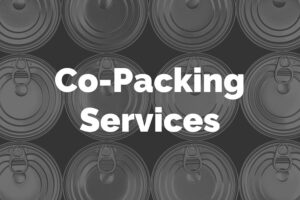The scarcity of labor has become the number one issue in US product distribution, particularly as peak season approaches. We spoke to KANE’s Senior VP of Distribution and Operations about the challenge of developing effective warehouse labor solutions, and what shippers can do to minimize the negative aspects of the labor crunch on their businesses.
Q: What’s happened with warehouse labor rates in the past year?
A: The demand for warehouse labor far exceeds supply right now. As a result, we’ve seen a meteoric rise in labor rates for warehouse workers – 20% to 25% just in the past 12 months. In order to attract the workforce needed to get orders out the door, shippers and their 3PLs are having to pay more to attract and keep these workers.
Q: Is there an alternative to paying more?
 A: The only alternative, I suppose, is massive amounts of overtime or excessive use of temporary labor. But these are not viable warehouse labor solutions because they impact work quality. On the retail side, errors lead to chargebacks and poor retailer scorecards; on the eCommerce side, they lead to disappointed customers and lost business. When you measure the long-term cost of a lost customer versus the required increase in labor costs, it’s clear we need to adjust rates to maintain a stable, high-quality workforce.
A: The only alternative, I suppose, is massive amounts of overtime or excessive use of temporary labor. But these are not viable warehouse labor solutions because they impact work quality. On the retail side, errors lead to chargebacks and poor retailer scorecards; on the eCommerce side, they lead to disappointed customers and lost business. When you measure the long-term cost of a lost customer versus the required increase in labor costs, it’s clear we need to adjust rates to maintain a stable, high-quality workforce.
Q: What’s causing the labor shortage?
A: Primarily, it’s consumer demand for goods. As the economy recovers and people return to the stores, many workers lost during the first year of the pandemic have not returned. Some have chosen to stay home – buoyed, perhaps, by enhanced federal unemployment benefits. Others have sought alternative work outside of logistics. For those that did return to a warehouse job, many are leaving to chase signing bonuses or a modest hourly wage increase at another warehouse.
Q: Does eCommerce play a role in the labor shortage?
A: Yes, for sure. Retail distribution may involve shipping one pallet of, let’s say, 160 units to a mass retailer. Direct-to-consumer distribution may involve shipping that same volume 160 different times, with each order picked, packed and shipped separately. That requires a lot more labor.
Q: With the recent uptick, are the current rates for warehouse labor inflated?
A: If you compare warehouse labor rates with the historical rise in the Consumer Price Index or wages for entry level workers in IT, insurance or other white-collar jobs, warehouse labor rates have not kept pace. So the recent stark increase, while unexpected, should not be a total surprise.
Q: What can shippers do to mitigate the impact of rising labor costs?
A: They must take a holistic view of their supply chains and look for other ways to reduce costs. That includes close collaboration with 3PLs to look at alternative strategies such as managing inventory levels, increasing turns so you need less warehouse space, consolidating freight, and automation of work processes.
Q: For shippers who outsource distribution, is there anything they can do to reduce labor costs on the 3PL side?
A: Yes, definitely. And these strategies should result from a close collaboration with the 3PL. Workload balancing is a good example. The volume of orders during a typical work week for one company might be split, percentage-wise, 30/30/30/5/5 from Monday to Friday. Well, that obviously creates labor challenges and overtime requirements on the busy days. Chances are that shippers can work with their own customers to spread the order flow more evenly across the week.
Q: Anything on the transportation side?
A: Labor planning is driven a lot by the timing of inbound freight. Predictable inbounds result in more precise, more efficient labor plans. If you have 2-3 loads that were scheduled to arrive on Tuesday but arrive instead on Wednesday, that throws warehouse staffing into a tailspin for the week. Shippers need to recognize these impacts on their labor costs and do everything they can to synchronize freight and warehouse schedules.
Q: What warehouse labor solutions is KANE working on?
A: First, I’ll say that labor has become our primary organization-wide focus. We examine wage rates weekly in each of the markets where we operate to ensure we’re in the best position to attract quality associates. You absolutely cannot play catch up on this issue; you have to stay a step ahead – of the market and competitors. Once you’re behind, it’s very difficult to dig out. You end up scheduling excess overtime hours or throwing untrained labor at the problem, and that starts a vicious cycle. It’s just not our way.
Q: Is it harder to retain associates in this environment?
A: Yes. Many warehouse operations are offering sign-on bonuses, guaranteed wage increases and other incentives to attract experienced associates. KANE has managed to maintain strong retention rates through this difficult period, reducing the high cost of warehouse worker turnover. Compared to the US industry average of 54%, KANE’s retention rate for warehouse associates is 80%. Much of that success is due to our strong culture – the KANE Code.
Q: Are there strategies you are adopting to mitigate the impact of higher labor rates?
A: Our warehouse labor solutions include the introduction of progressive wage increases. When we hire a new warehouse associate, we lay out a series of planned wage increases over the first two years. They see a path and are less likely to leave to chase a 50 cent increase they would have gotten anyway.
Of course, we are always looking at automation to increase throughput with less people. In some cases, the customer will fund the capital investment; in other cases, KANE will make the investment – over a million dollars in some cases – when we see a clear ROI. Naturally, 3PL contract length needs to be long enough to get an ROI on the investment. Where you have a close, strategic relationship with the customer, these kinds profit-driving investments are possible.
Q: Is what we are seeing with warehouse labor rates the new normal?
A: Things won’t go back. Wage rates may stabilize for a while after the recent steep uptick, but they won’t decrease from where they are. The best thing shippers can do is make labor planning a strategic priority – in their own operations and through their 3PL relationships. There is no short-term fix. The only answer is to do the hard work required to become a true employer of choice for workers who find themselves more in demand than ever before.
To discuss how a 3PL can help you address current labor challenges in warehousing and distribution, reach out to Kane Logistics today to start a conversation.
Source: https://www.kanelogistics.com/blog/warehouse-labor-solutionskanes-john-kettman
- Automation
- BEST
- business
- businesses
- capital
- cases
- Catch
- challenge
- chances
- chase
- code
- collaboration
- company
- competitors
- consumer
- contract
- Costs
- Culture
- Current
- Customers
- Demand
- DID
- dollars
- driven
- ecommerce
- economy
- Effective
- Environment
- Federal
- First
- Fix
- flow
- Focus
- Friday
- fund
- good
- goods
- High
- hire
- Home
- How
- HTTPS
- HubSpot
- Impact
- Increase
- index
- industry
- insurance
- inventory
- investment
- Investments
- IT
- Job
- Jobs
- labor
- lead
- Level
- logistics
- Long
- Market
- Markets
- measure
- million
- Monday
- months
- offering
- Operations
- order
- orders
- Other
- pandemic
- Pay
- People
- planning
- poor
- price
- Product
- quality
- Rates
- reduce
- Relationships
- Requirements
- retail
- retailer
- Series
- Shipping
- So
- Solutions
- Space
- split
- spread
- stay
- stores
- Strategic
- success
- supply
- Supply chains
- surprise
- temporary
- transportation
- unemployment
- us
- Versus
- View
- volume
- week
- weekly
- WHO
- Work
- workers
- Workforce
- year
- years









